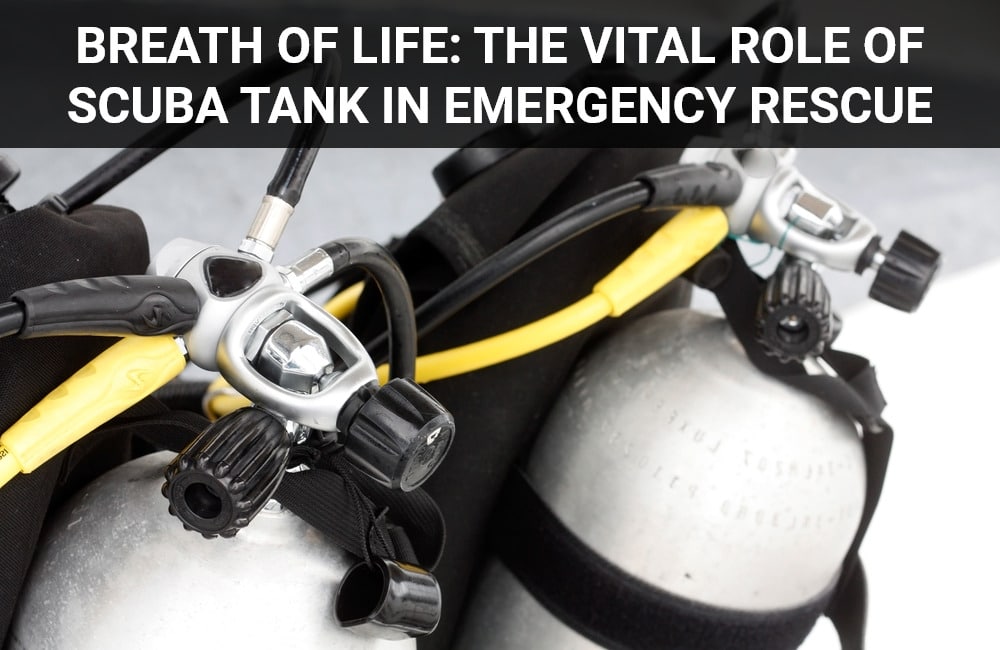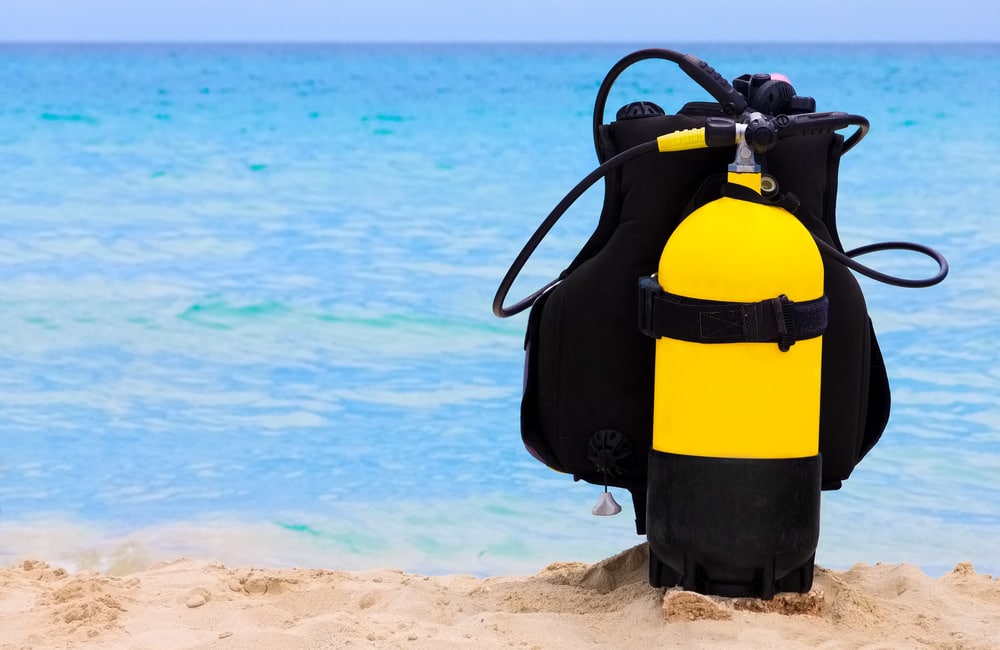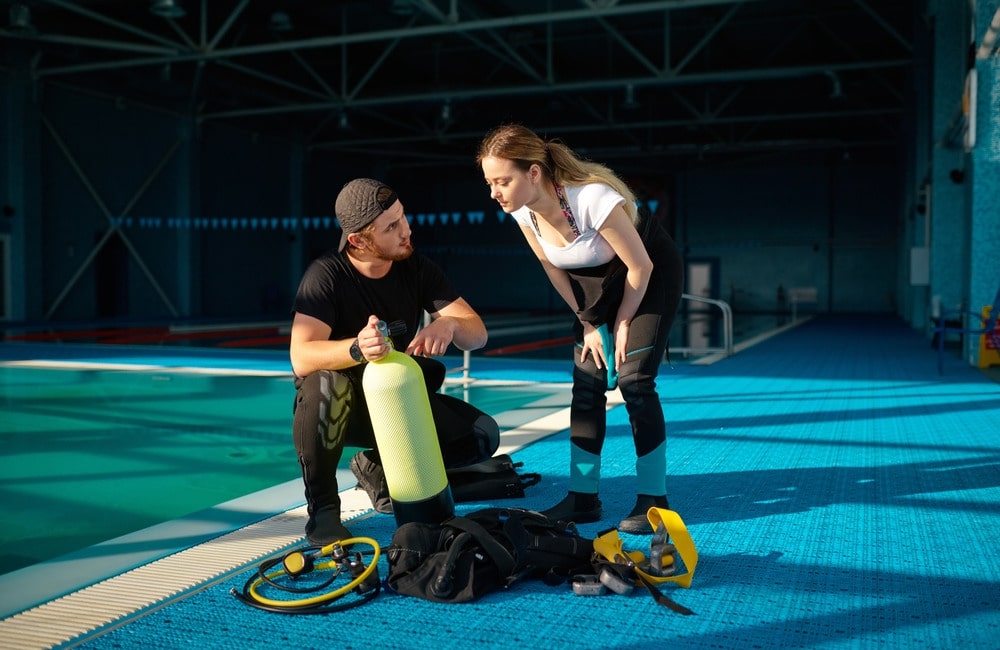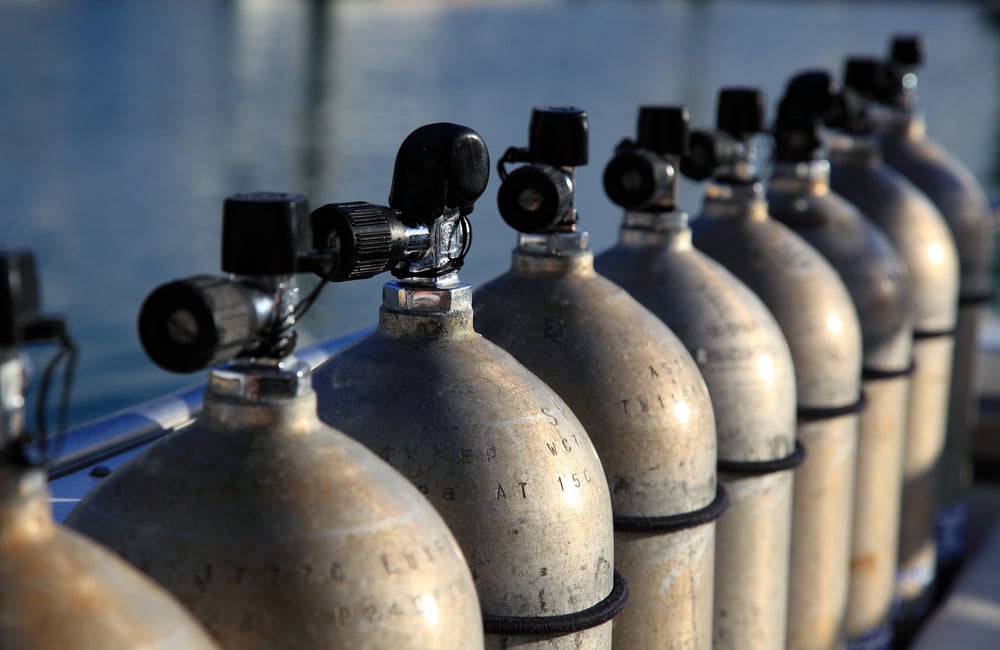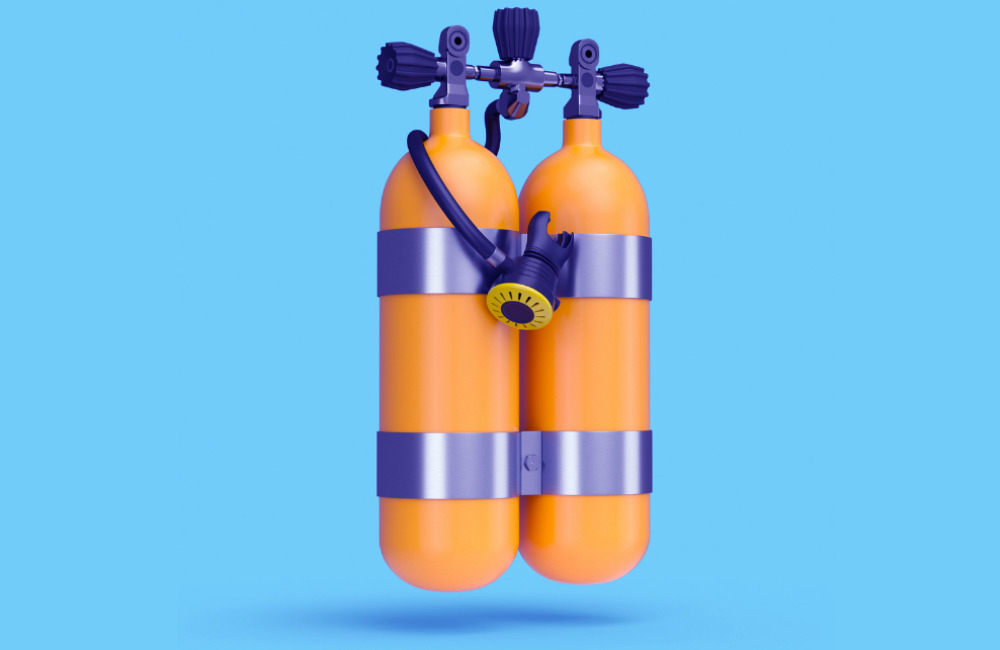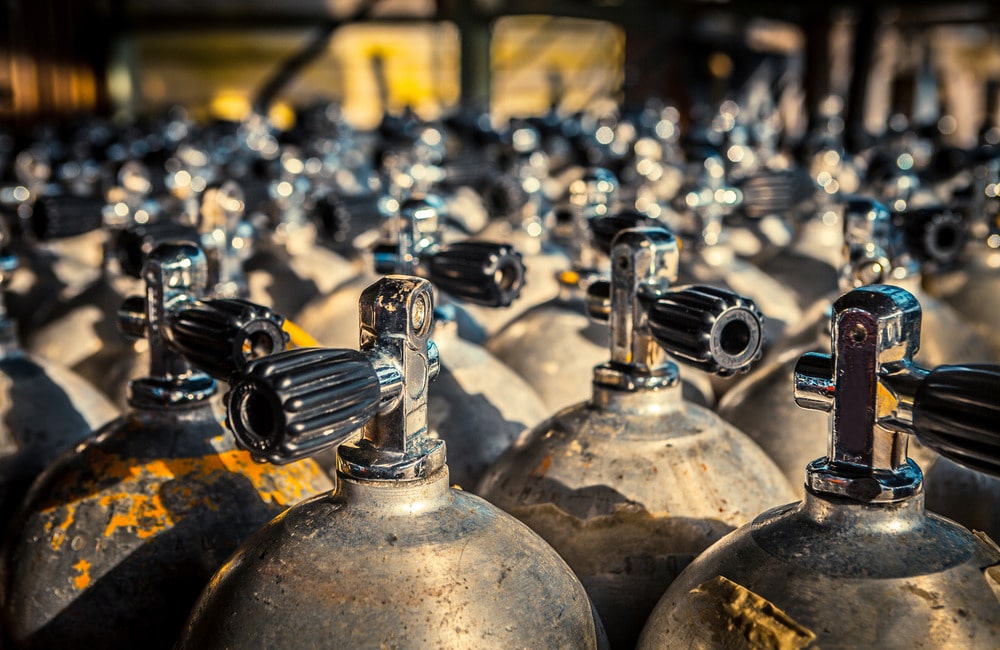Blog
Breath of Life: The Vital Role of Scuba Tank in Emergency Rescue
When it comes to lifesaving situations, time is always of the essence. Emergency rescue operations can mean the difference between life and death, especially when every second counts. And while many think of traditional rescue methods, such as firetrucks and ambulances, there is another critical tool that often goes unnoticed but plays a vital role in emergency rescues, the scuba tank.
That’s right; in situations where water may be a barrier to lifesaving efforts, a scuba tank can make all the difference. From searching submerged vehicles to pulling someone from a water source, scuba tanks allow those in critical situations to breathe underwater and carry out rescues that may have previously been impossible. So, in this article, we will explore the essential role of scuba tanks in emergency rescue operations.
Understanding Scuba Tanks 
One of the most essential pieces of equipment for any scuba diver is the scuba tank. These cylinders are filled with compressed air that allows you to breathe comfortably while underwater. But scuba tanks are more than just simple containers for air – they are sophisticated pieces of equipment with several key components.
From the cylinder that holds the compressed air to the valve that controls how it flows, each piece plays an important role in ensuring a safe and enjoyable diving experience. There are also various types of scuba tanks available, each with a specific capacity and purpose. By understanding the key components and types of scuba tanks, you can choose the right one for your diving needs and make the most of your underwater adventures.
The Significance of Scuba Tanks in Emergency Rescue 
Scuba tanks are a critical piece of equipment during emergency rescue operations. These tanks enable rescue divers to remain underwater for extended periods, providing them with the necessary oxygen to carry out their mission. The impact of scuba tanks goes beyond providing breathable air, however.
They also give rescue divers the ability to move effortlessly through the water, reaching areas that may not be easily accessible by other means. This enhanced mobility and maneuverability can be crucial in situations where time is of the essence.
Additionally, scuba tanks are indispensable for search and recovery operations, allowing divers to spend more time searching for and retrieving objects. In short, the significance of scuba tanks in emergency rescue cannot be overstated. They are a vital tool for any rescue operation, providing lifesaving support and improved effectiveness for rescue divers.
Utilizing Scuba Tanks in Various Emergency Rescue Scenarios 
Following are the emergency scenarios in which scuba tanks can be utilized efficiently:
Water-Related Emergencies
In the world of emergency rescue scenarios, scuba tanks have become a vital resource in a variety of water-related emergencies. From swift-water rescue operations to submerged vehicle rescues, these durable tanks allow first responders to access areas underwater and provide rescue efforts that may otherwise be impossible.
Furthermore, in cases of drowning incidents, utilizing scuba tanks can help increase the chances of survival for a victim. The versatility and durability of scuba tanks have proven to be a valuable asset in emergency rescue situations, ultimately saving countless lives.
Being prepared and equipped with the proper resources has never been more vital when it comes to ensuring public safety in high-risk environments.
Natural Disasters
Floods and hurricanes, earthquakes and tsunamis, and dam and reservoir emergencies are all situations where immediate action needs to be taken. Scuba tanks can be an essential tool in emergency rescues because they allow rescue teams to reach those in need, even in the most inaccessible locations.
With sturdy and reliable scuba tanks, rescue teams can navigate through murky flood waters, navigate through damaged buildings after an earthquake, or help evacuate a dam or reservoir. These scenarios require quick thinking and reliable equipment. Utilizing scuba tanks in these various emergency rescue scenarios can help save lives and offer hope in the midst of disaster.
Industrial Accidents
Industrial accidents can occur out of the blue and without warning, making them some of the most challenging situations to handle. Underwater construction mishaps, oil rig emergencies, and chemical spills are just a few examples of the kinds of emergencies that might require the use of scuba tanks.
Whether you’re working on a construction site, drilling for oil, or dealing with a hazardous chemical spill, scuba tanks can be incredibly useful in helping rescue crews to operate more safely and efficiently. With the right training and equipment, scuba tanks can be an invaluable tool in saving lives and preventing injury in some of the most dangerous industrial settings.
Training and Preparation for Scuba Tank Usage in Emergency Rescue
When it comes to emergency rescue situations that involve scuba diving, the importance of specialized training for rescue divers cannot be overstated. Along with the necessary certification requirements, ongoing skill development is crucial to ensuring that these divers can perform their duties to the highest standard possible.
This includes comprehensive knowledge of safety protocols and procedures for handling scuba tanks, which are an essential component of any rescue mission. With proper training and preparation, rescue divers can maximize their effectiveness in responding to emergencies while minimizing the risks posed by these challenging environments.
Ultimately, the skills and expertise of these divers can make a critical difference in saving lives, making their specialized training all the more invaluable.
Ensuring the Safety and Maintenance of Scuba Tanks
Diving into the ocean depths is a thrilling adventure that many scuba enthusiasts enjoy. However, this experience cannot be enjoyed without ensuring the safety and maintenance of the tools used. Scuba tanks are one such essential component that needs regular inspection and maintenance.
Proper storage and transportation of these tanks are also crucial to ensure their longevity and safety. Addressing the potential risks, such as tank failures or air contamination, is equally important. Following the guidelines for safety and maintenance ensures that scuba divers can have a safe and enjoyable experience exploring the underwater world.
Collaborative Efforts and Communication in Scuba Tank-Enabled Emergency Rescue 
Scuba tank-enabled emergency rescue operations require a level of teamwork and coordination among rescue divers and support personnel that is unparalleled in other emergency situations. In order to navigate unfamiliar and dangerous underwater environments, clear and effective communication is vital.
By utilizing specialized communication systems, rescue divers can communicate with one another, as well as with support personnel above the surface. This ensures that crucial information is relayed quickly and efficiently, minimizing the risk of confusion or miscommunication that could lead to disastrous outcomes.
Additionally, establishing a clear chain of command and adhering to a strict incident command structure is crucial. Doing so enables every member of the rescue team to know their role, understand their responsibilities, and work seamlessly together to carry out a successful rescue operation.
Success Stories: Showcasing the Impact of Scuba Tank-Enabled Emergency Rescues 
The ability to assist in underwater rescues is a crucial skill that should never be underestimated. The role of scuba tanks in these lifesaving endeavors cannot be underestimated. Through proper training, equipment, and teamwork, rescuers are able to safely navigate the murky depths and perform successful extractions.
There are numerous real-life examples of these successful missions – divers who have saved lives in disparate situations, such as car crashes in flooded rivers, trapped cave explorers, and even drowning swimmers. Without the capabilities of scuba tanks, these missions would not have been possible.
Real-Life Examples of Successful Rescue Missions Involving Scuba Tanks
There have been numerous successful examples of rescues involving scuba tanks. One such instance occurred in 2018 when a soccer team and their coach were trapped in a flooded cave in Thailand. Divers from around the world hastily came together to locate and rescue the group, with some even risking their own lives in treacherous conditions.
The efforts paid off, and all 12 boys and their coach were safely extracted after 18 days underground. This is just one example of the countless times that scuba tanks have played a crucial role in rescue missions. Beyond their recreational uses, these tanks have proven to be powerful tools of heroism, and we can only hope that such stories continue to inspire bravery and teamwork in times of crisis.
The Bottom Line
As we bring this discussion to a close, it’s important to reflect on the vital role that scuba tanks play in emergency rescue situations. When time is of the essence and every second counts, having a reliable source of oxygen can be the difference between life and death. However, it’s not enough to simply possess a scuba tank.
Ongoing training, maintenance, and collaboration are essential for effective rescue operations. By staying up to date on the latest techniques and equipment and working closely with other rescuers, we can provide the best possible care to those in need. The breath of life that scuba tanks provide is a powerful tool that we cannot afford to overlook in our efforts to save lives.
